Storied history, vibrant community and art converge at Pleasant Beach Village in Lynwood Center. Situated at the south end of Bainbridge Island steps away from the waterfront, the laid-back vibe and gentle pace of this unexpected Tudor-style village mirrors its slow growth and steady cultural, familial and commercial evolution.
Once a Suquamish Indian camp, later inhabited by Japanese tenant farmers and eventually developed as a neighborhood hub, this hamlet is now a thriving intertwining of historical buildings and new development and has become an island destination and community treasure.
The Manor House was the defining structure of this hamlet. Imbued with old-world grandeur and island charm, it’s one of the oldest buildings in Lynwood Center and the inspiration for the Pleasant Beach Village development.
Built in 1898 by homesteader Emil Olson, the home was gifted to his son Emanuel upon his marriage to Edna James. Edna renovated the home in 1932 in the Tudor style she loved, and her original vision of a Tudor Village stands today. The Olsens also built the mixed-use buildings across the street which house the historic Lynwood Theatre in the same vernacular.
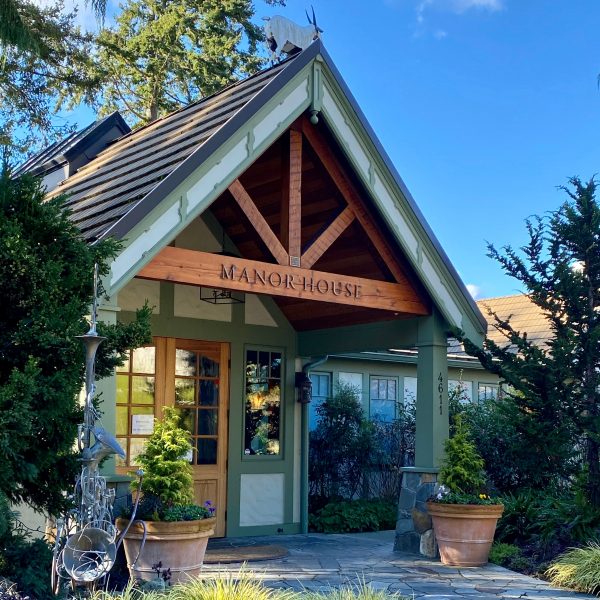
Over the years, with the passing of family and of time, the Manor House was converted into various restaurants and by the early 2000’s Lynwood Center was looking a tad frayed about the edges. The melancholy disrepair tugged at the heartstrings of a few individuals who saw an opportunity and ventured to breathe new life into the place.
To Everything There is a Season
Through a series of fresh ideas, false starts and fabled failures, Pleasant Beach Village was conceived and completed. Owner John Jacobi incorporated public art into every nook and cranny. Visitors enjoy the inn, shops, eateries, gardens, fountains and pool amidst of the work of five artists; Georgia Gerber (bronze sculpture), Jim Honold (metalwork), Douglas Walker (found materials fountains), Raquel Stanek (mosaics) and Bob Bowling (yard and garden structures).
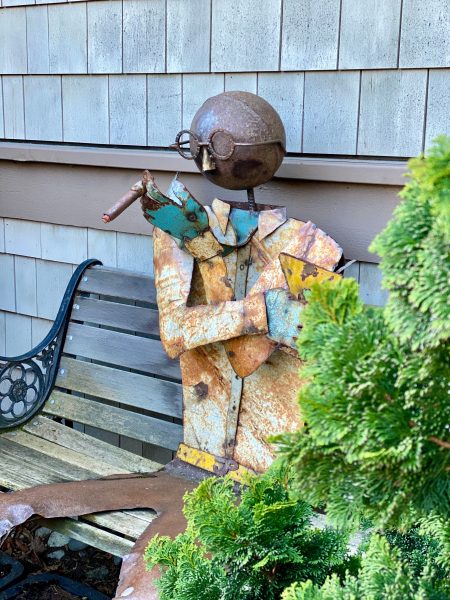
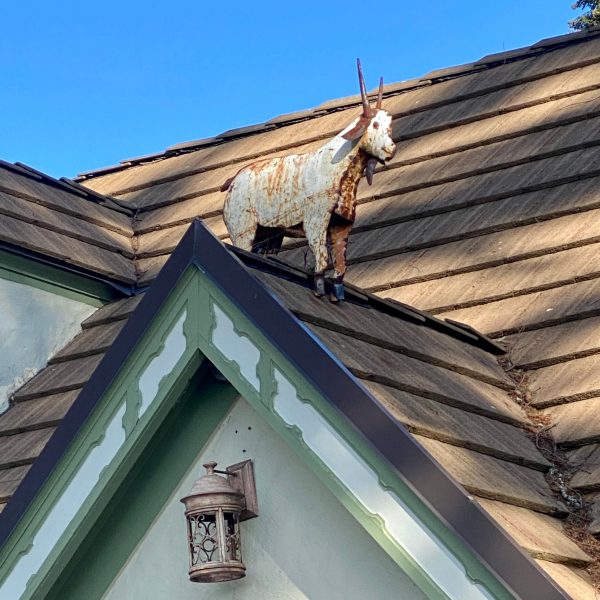
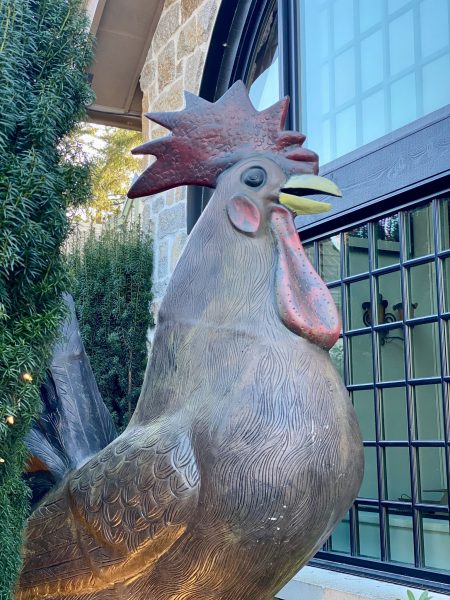
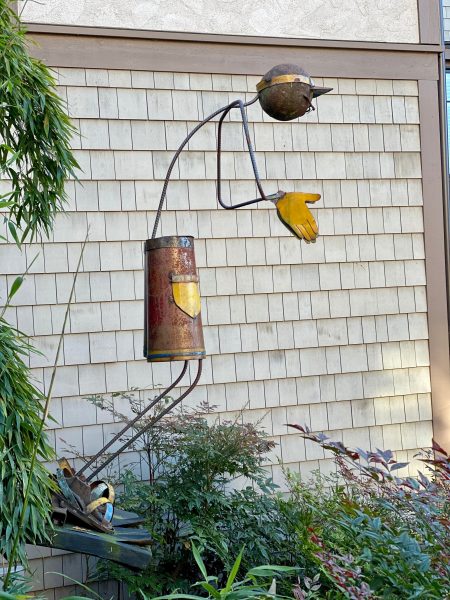
John Jacobi’s love of art, whimsy and animal welfare (in equal measure) coalesces in a storybook-esque menagerie of playful sculptures including cats, mice, divers, swimmers, smokers, goats, roosters and flying pigs; all thoughtfully designed into the property’s architecture, decorative ornamentation and public spaces – that is, with a few delightful exceptions like the metal goat by Jim Honold. Originally placed on the restaurant’s patio amongst the potted plants, the goat was “re-homed” to the roof by a properly “libated” member of a boisterous bridal party. After the party was over, the goat was permanently affixed to the gable in celebration of all things serendipitous.
And then there’s the metal flying pig inside The Marketplace restaurant, hanging from the ceiling. The winged pig wasn’t part of the Marketplace’s branding strategy, but the staff embraced its whimsical, quirky nature and intuited that it must be the theme of the place. As a result, a staff member designed a silhouetted image of the flying pig and ta-da – it’s Marketplace’s singular icon! Printed and embroidered on caps, sweatshirts and coffee mugs, it’s a fun take-away.
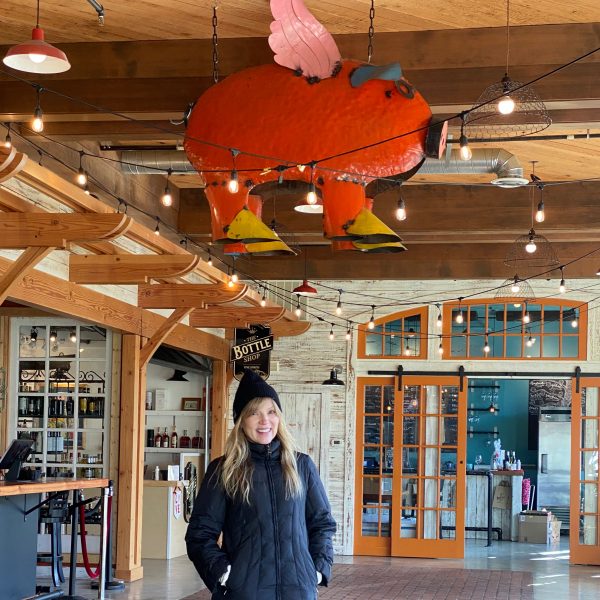
I’d never noticed the flying pig before (possibly due to a laser focus on the pastry case when I visit), but it was with the impassioned insight and knowledge of Andrea Mackin (Director of Marketing) and Joe Raymond (GM) that I experienced this familiar environment as if for the first time – noticing nuances, small details and partially hidden artworks tucked away in surprising places.
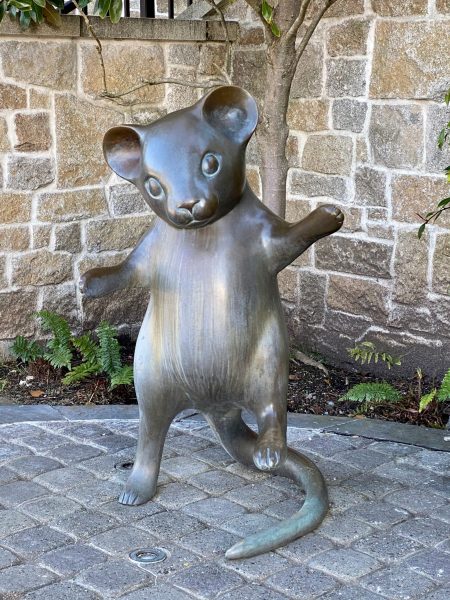
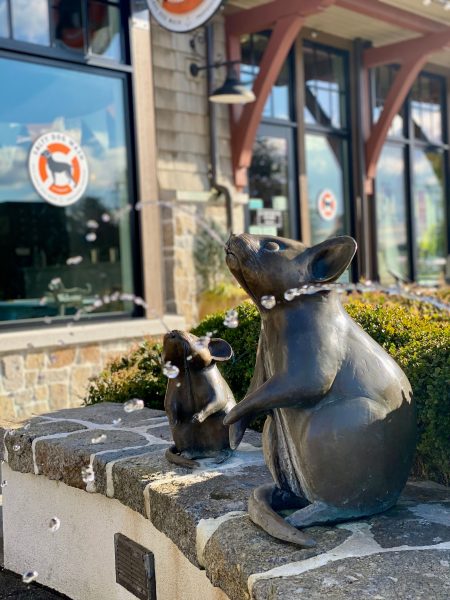
After leaving The Marketplace (with one of their famed handmade sourdough donuts and a gifted knit cap), we began our outdoor tour with the most visible and interactive of all the sculptures on the property, Boys Night Out. Artist Georgia Gerber created the fountain which is centrally located in the middle of the block using three playful bronze mice figures. The animated fountain is irresistible to children during warmer weather and that was precisely the idea! Accessible public art is paramount in the eyes of Gerber who also created the other two cat and mouse fountains which bookend the street.
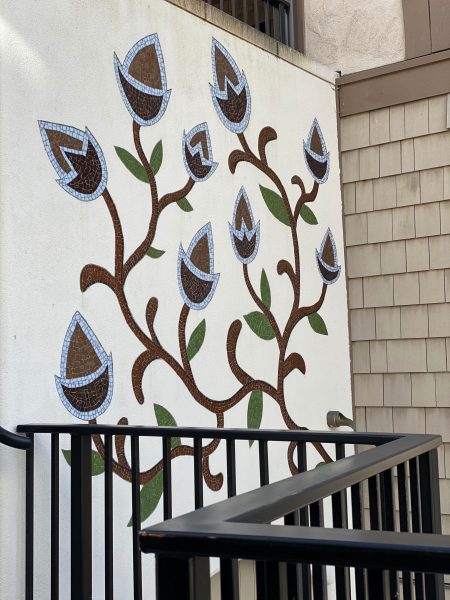
Along the sidewalk, pieces of found “art” dot the landscape by way of old farm equipment and an old woodshed structure on wheels. Small features like the hands of the clock in the tower, depicting a cat chasing a mouse, can easily be overlooked. The mosaics of Bainbridge Island artist Raquel Stanek were subtly designed into the stucco walls of the staircases which take visitors from the main sidewalk to the inn and pool. Andrea and Joe were sure to point out that those walls might have easily been used for signage or overlooked as a place for decorative art but for John Jacobi’s vision of an artfully designed property.
There’s nothing more delightful than the sound of running water, and Canadian artist Douglas Walkers found objects fountains (there are three) provide visual and auditory accompaniment as you stroll through the grounds of the inn, restaurant and pool.
The grounds are magical thanks in part to the beautiful landscaping and Bob Bowling’s outdoor one-of-a-kind structures. It seems anything your eyes alight upon at the Pleasant Beach Village is gentle, artful and welcoming.
I’d like to think if Edna Olson were alive today, she’d be pleased to see how things are coming along in Lynwood Center. Next time you visit, take a moment to consider Lynwood Center’s enduring place in our community, how one woman’s vision lives on for us to enjoy in the present day and why not see how many of these joyful pieces of art you can spot!

OTHER ARTICLES BY DENISE:
New Sculptures in Familiar Places: Public Art Installations on Bainbridge Island
Green Light Garage: The Motherboard
Denise’s Favorite Virtual Gallery Tour: The National Cowboy Western & Heritage Museum

ABOUT DENISE STOUGHTON INSPIRED by globe-trotting, day tripping, found objects and high fashion, Denise has been designing home decor for two decades. Originally from the island of Manhattan, she traded concrete and glass skyscrapers for skyscrapers of the deciduous and coniferous variety and now lives happily on Bainbridge Island with her Chihuahua, Tula. Interior Design has and always will be her first love. She studied (and later, taught) at the Fashion Institute of Technology in NYC. Denise writes a blog for Mercury Michael and is also a member of AHB’s Public Art Committee – placing public art in public spaces.